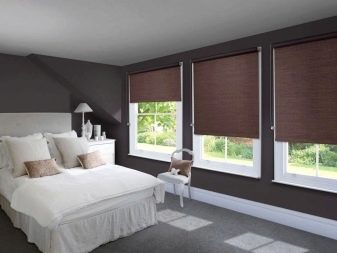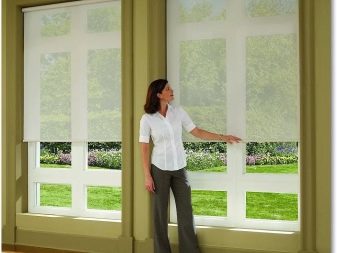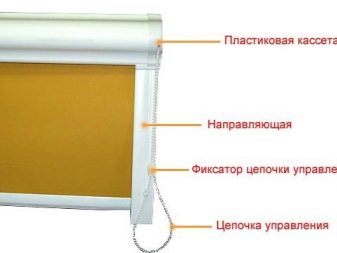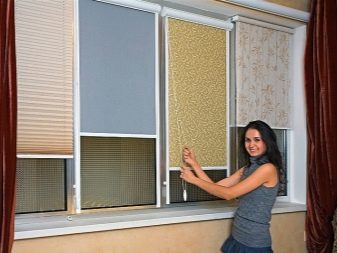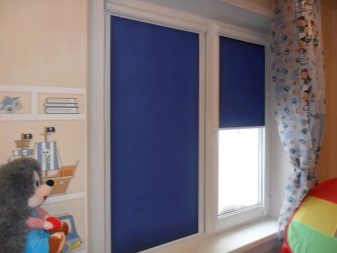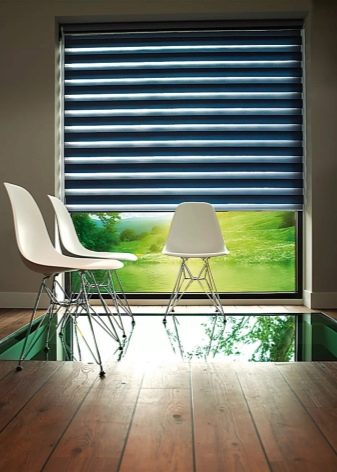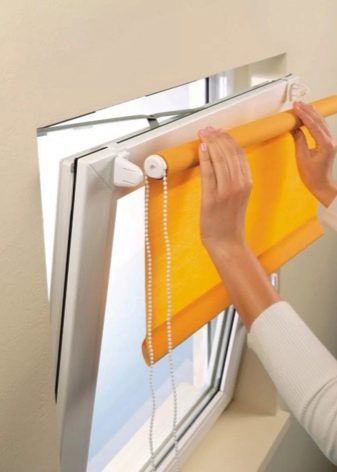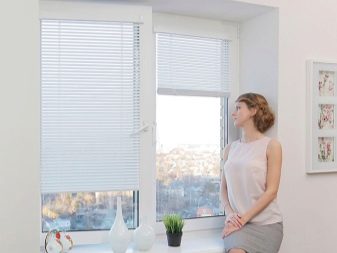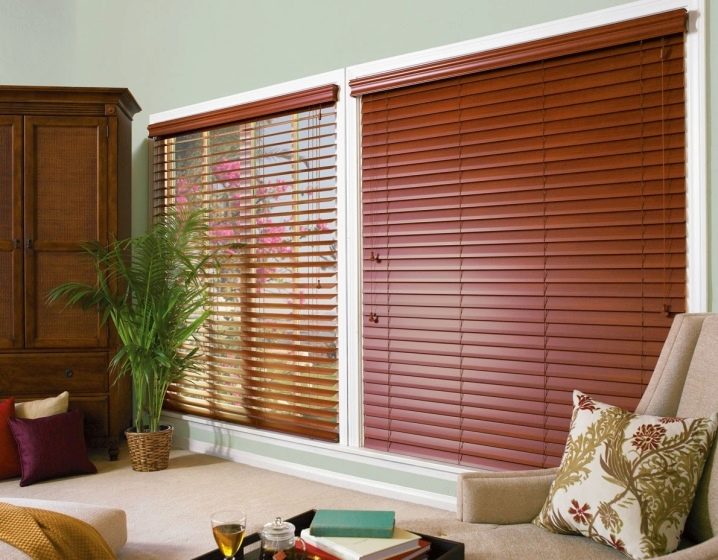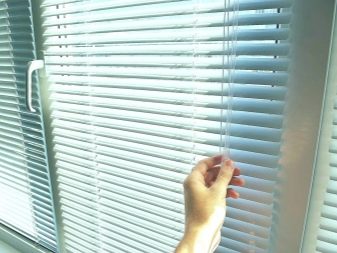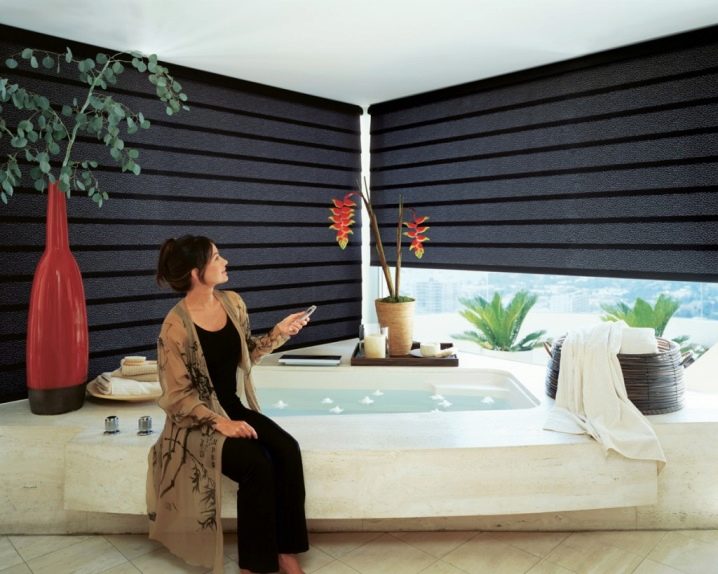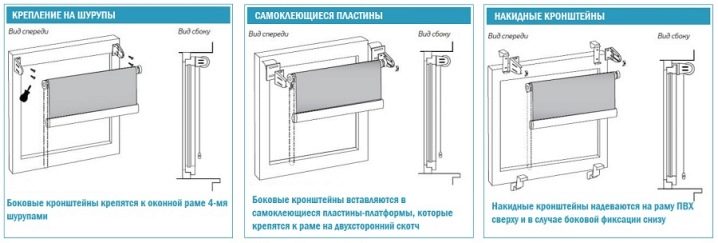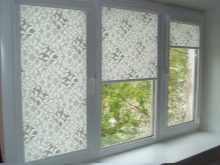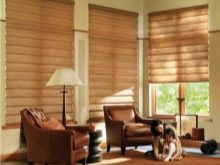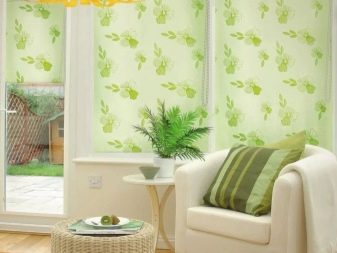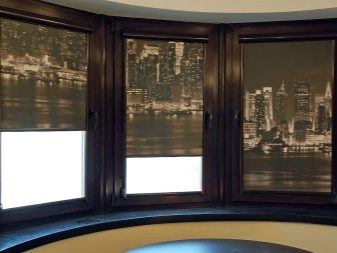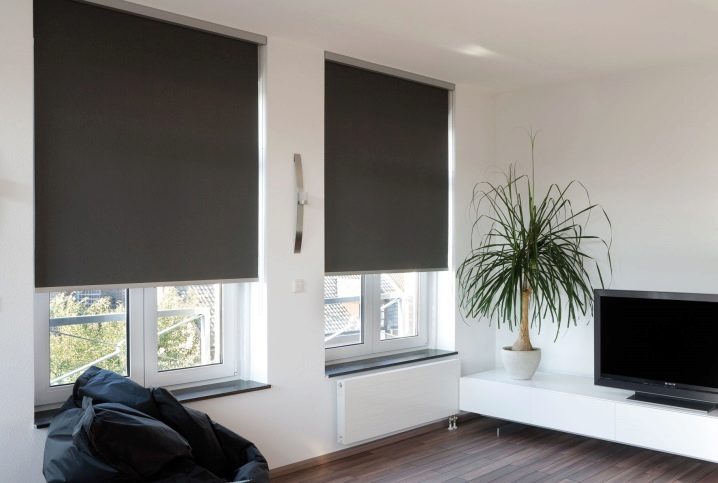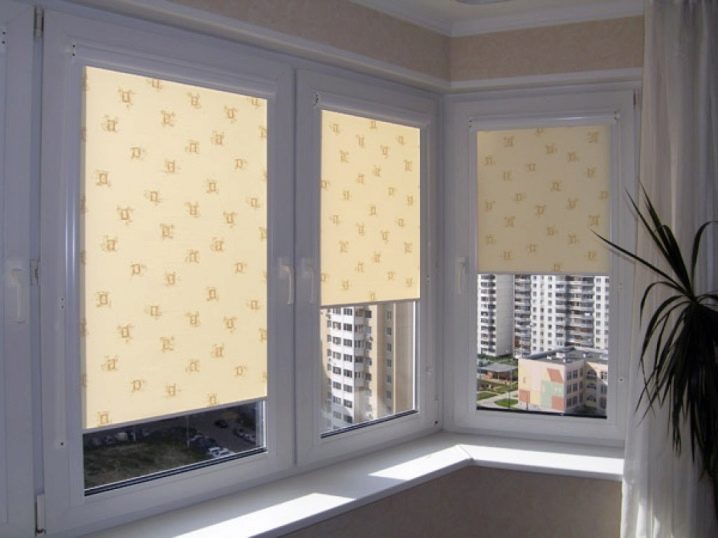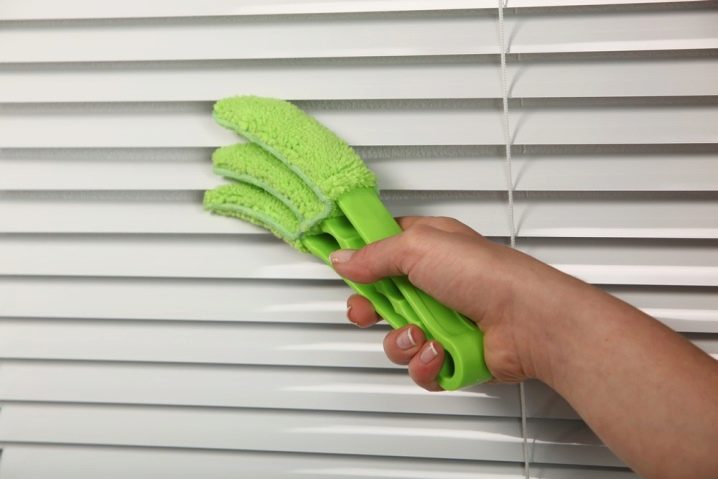Cassette blinds

Cassette blinds are a great way to decorate a window, select or hide a door, arch, partitions, do it effectively and not lose functionality. In a word, they are an original and beautiful element in interior design.
Design features
Cassette blinds are quite simple. The design differs from the usual in that the curtain rises and hides in a small box at the top (it is called a cassette). This box also hides all mechanisms and cords for controlling and lifting curtains. Due to the presence of the box, cassette blinds have only a horizontal variety, they move from the bottom up and, conversely, along the vertical slopes.
This is a very convenient way to curtain, the canvas can either completely close the window glass, and, if necessary, open completely or be fixed at a certain height. Such a curtain keeps its shape well, thanks to a plumb bottom and side guides. Also, cassette blinds leave the sill space completely open, which can be used to create an additional work surface, for example, in the kitchen.
If the windows, on which it is planned to install the blinds, have a flap with a folding mechanism, then it is better to choose mini-cassettes. The same applies to skylights with a slope. Mini-cassettes allow the curtain to maintain the same angle of inclination as the window. The difference from the usual cassette blinds in mini-systems is only one thing: the width of the slat (the plates from which the curtain is assembled). For mini-blinds, it is used from 16 to 25 mm wide, for standard - from 25 to 50 mm.
Cassette blinds are installed in such a way as to cover only the glazed surface of the window. The handles on the double-glazed windows remain accessible, and there is no need to move the curtain back in order to do any manipulations with the window.
Cassette designs are of two types, depending on the curtains that hide:
- blinds (made of slats);
- roller blinds (made of a piece of fabric or other material that is screwed onto a roller inside the cassette).
Advantages and disadvantages
Among the advantages of cassette blinds, experts and consumers note the following:
- ease of construction and small size;
- ease of management;
- reliability in work;
- a huge variety of materials and models;
- ease of maintenance;
- free window sill, which can become an additional work surface;
- the ability to install on opening windows and doors without compromising their functionality;
- mount without drilling, so that the structure can be repeatedly removed and outweighed;
- the ability to independently install the structure, without spending on a call master.
The disadvantages are mainly related to the features of the device. Sometimes there are problems in connection with the breakdown of the drive mechanism, damage to the fasteners on the lamellae and the nylon lines that stretch the curtain web. Also among the problematic cases, consumers note frequent lamella breakdowns fromaluminum.
Cassette blinds - a great choice for those who want to make the room more comfortable and unique. Easy installation, a variety of materials and colors, ease of maintenance and durability - thanks to these factors, cluster blinds will settle in the house, and its owners will be happy for a long time.
Control methods
Blinds can be controlled in three ways:
- manual control with a string, chain or spring;
- spring mechanism systems;
- automatic control using a special drive.
- Manual control more suitable for small windows, rooms where there are few windows or a system with mini-cassettes.
- Spring Mechanism Systems differ from the manual ones in that to raise or lower the curtains you just need to turn the knob, the mechanism will do the rest. Blinds with such a mechanism are suitable for installation on both folding surfaces and dormer windows.
- Electronic control system, equipped with an electric eaves, will allow to cover a large area. To do this, there is no need to perform complex programs, a simple press of a button on the remote control, and with the help of a remote control, the blinds will rise or fall automatically.The cost of electronic systems is slightly higher than that of simpler models having manual control. However, the price justifies the ease of use.
Cassette blinds can be installed exclusively on vertical surfaces, therefore, they are most often placed on a window, fixed in two places:
- on the leaf;
- on the top profile.
In this case, mini-constructions are considered to be the more advantageous option, since they are rather reliable and easy to operate. In order to install the box with blinds on the window, usually use scotch tape, brackets or metal clips. Drilling is not used, due to which such constructions are also suitable for plastic window blocks.
In some cases, blinds are attached to the wall or to the ceiling in order to fully utilize the possibilities of sliding window systems. With this design for mounting using screws. The design allows you to install cassette blinds and plastic windows.
How to install cassette blinds, see the following video.
What materials are they made of?
Today the market of materials is very wide, and it practically does not limit manufacturers of blinds in their application for their needs.For horizontal cassette blinds can be used both natural and synthetic materials.
Depending on the type of material used, blinds can be:
- from fabric (a huge variety of materials: acrylic, viscose, cotton, linen, silk, etc.);
- from plastic,
- from wood,
- from bamboo,
- from aluminum,
- from a nonwoven cloth.
The curtain of almost all materials is subjected to special treatment, so that it does not accumulate static electricity and becomes waterproof. UV-impregnation significantly reduces the force of exposure to sunlight and allows you to maintain the original color of the blinds for many years. All this simplifies care for them and increases their uptime.
A variety of colors and textures of materials, as well as the use of modern printing technologies give a huge scope for creativity and allow you to choose the necessary model for any interior.
Blinds can be made not only in different colors, but also put drawings and photographs on them. Such unique blinds will make any room unusual, bright, comfortable and expressive.
Use in the interior
Thanks to the cassette blinds, you can create an effect in the room at a different time of day.
Modern technology has allowed the creation of curtains that absolutely do not let the sun's rays through. Closing the curtain with blackout effect, you can completely stop getting into the windows of sunlight, and even in the midst of the day to be in a completely dark room.
Ideal for these blinds in the bedroom: hanging them on the window, you can not be afraid that the sun will wake up before you can sleep.
Cassette blinds are also capable of adjusting the indoor lighting. like "day-night". To create them, they usually use materials with different light transmission ability, textures and colors, or combine two curtains with different characteristics like a zebra. Due to such different properties, you can create the necessary level of illumination, just lowered or lifting the curtain.
These blinds will get acclimatized in a room facing the sunny side. Their diversified fabric will absorb excess light and heat, while maintaining a comfortable temperature and light in the room.
Blinds on the balcony windows - optimal solution. As a rule, they are aluminum, but can be made of fabric.Cassette blinds are conveniently mounted and do not interfere with the opening of windows, do not interfere with movement on the balcony and are easy to clean. They can be fixed so that they cover only the glass sheet, it will be very convenient and will allow you to adjust the illumination of each window individually.
How to care?
Cassette blinds are completely undemanding in the care. They need to be cleaned from time to time with a damp cloth or vacuuming. If strong contaminants appear, they are supportive of cleaning with special chemicals, calmly perceive the effects of household cleaning products. Thanks to these properties, they will be appropriate in the offices, in the kitchen, and in the living rooms and bedrooms of a residential building.
However, some surfaces can be quite capricious. For example, wooden slats do not like moisture, so they need to wipe dry.
